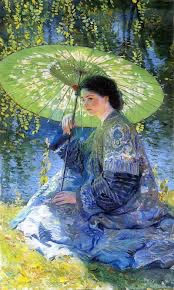Umbrellas were once used only by women
- Classic City News

- Sep 28, 2024
- 2 min read

Umbrellas have been around for a long time — at least 3,000 years, according to T.S. Crawford's A History of the Umbrella — but they were used by only select segments of the population for much of that history. Ancient Egyptians used them to shade their pharaohs, setting the tone for an association with royalty and nobility that would also surface in China, Assyria, India, and other older civilizations. Meanwhile, they were deemed effeminate by ancient Greeks and the Romans who assumed many of their cultural habits. It should be noted that these early umbrellas protected against the sun, not rain, and were generally used by women to shield their complexions.

The association between women and umbrellas persisted through much of Europe for centuries, and stubbornly remained into the 18th century, even after the first waterproof umbrellas had been created (around the 17th century in France).
In England, at least, the man credited with ushering in a new age of gender-neutral weather protection was merchant and philanthropist Jonas Hanway. Having spotted the umbrella put to good use during his many travels, Hanway took to carrying one through rainy London in the 1750s, a sight met with open jeering by surprised onlookers. The greatest abuse apparently came from coach drivers, who counted on inclement weather to drive up demand for a dry, comfy ride. But Hanway took the derision in stride. Shortly after his death in 1786, an umbrella advertisement surfaced in the London Gazette, a harbinger of sunnier days to come for the accessory’s reputation as a rain repellant for all.
Umbrella champion Jonas Hanway was a pronounced opponent of tea drinking

You’d expect a man bold enough to navigate the hardscrabble streets of 18th-century London with a dainty umbrella to possess a certain determination to get things done, and indeed, Jonas Hanway was a champion of many causes. He founded the Marine Society to recruit cadets for the navy, served as an executive for the Foundling Hospital children’s home, advocated for the safety of chimney sweepers, and even attempted to convince a nation of tea drinkers that they were doing something profoundly wrong. This last effort came by way of his 1756 work “An Essay on Tea,” which summed up the evils of the seemingly benign refreshment with the subtitle: “Considered as pernicious to health; obstructing industry; and impoverishing the nation.” As with his umbrella crusade, his zealous stance on tea drinking was met with a degree of public mockery, most notably in a response by famed British writer and lexicographer Samuel Johnson in Literary Magazine. But there was no posthumous redemption to be earned in this particular arena, as his countrymen and women went right on indulging themselves with the beverage, and continue to do so to the tune of 100 million cups daily.





google seo…
03topgame 03topgame;
gamesimes gamesimes;
Fortune Tiger…
Fortune Tiger…
Fortune Tiger…
EPS Machine…
EPS Machine…
seo seo;
betwin betwin;
777 777;
slots slots;
Fortune Tiger…
seo优化 SEO优化;
bet bet;